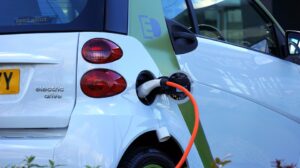While many people think of electric cars as a fairly new invention, the electric vehicle, or EV, has been around for nearly two centuries. The first EV dates back to the 1830s. Many different models were built across Europe and America. Many versions have been created with improved batteries. By the late 1880s, major development of electric cars was supported by the United Kingdom and France. Camille Jenatzy of Belgium invented the fastest EV, which has been clocked at 100 kmph. Switzerland, which lacked the natural fossil resources of other countries, also supported the electrification of its railway system, which reduced its dependence on foreign resources and helped develop the technology even further.
In America, the first electric car was not developed until the late 19th century. The first electric vehicle noticed was a camper that could seat up to six passengers. Designed by William Morrison and Al Riker, this car is considered the first practical electric vehicle. Innovations in electric vehicles increased rapidly by the early 20th century. By the turn of the century, America was very prosperous, and cars of all kinds were becoming more popular. The first hybrid electric motor/combustion engine was manufactured in 1916. These vehicles had an advantage over their competitors for a number of reasons. They were less noisy, and they didn’t have the smell and vibration associated with chrome-powered cars.
Electric cars were very successful in America during the 1920s. However, by the late 1920s and early 1930s, gasoline had begun to dominate the market. With the discovery of crude oil in Oklahoma and Texas and the development of improved road infrastructure in America, gas-powered cars became more affordable and popular. They can also now travel farther and faster than their competitors. By the late 1930s, American electric cars had practically disappeared.
By the 1960s and 1970s the concept of alternative fuel vehicles and foreign oil independence became more popular, but it wasn’t until the 1990s that many were available on the market. With the passage of clean air legislation by the US government, a few major auto manufacturers have begun announcing that they will be offering some electric models in their lineup. Since the early 2000s, interest in electric and hybrid cars has increased. Automakers are slowly moving away from vehicles that lack fuel.
Since the end of the 2000s, more manufacturers have begun introducing fully electric vehicles. Due to the increase in the cost of gasoline and the growing awareness of the importance of environmental awareness, electric vehicles are becoming more and more popular and are likely to become more popular in the near future.




No comments! Be the first commenter?